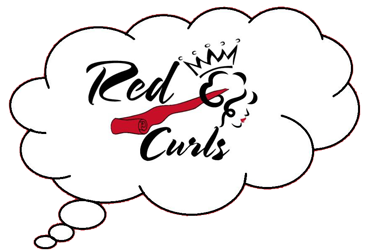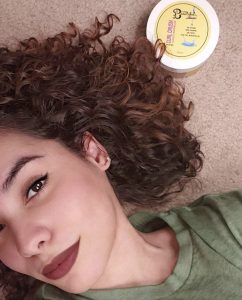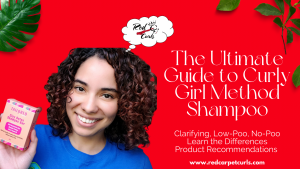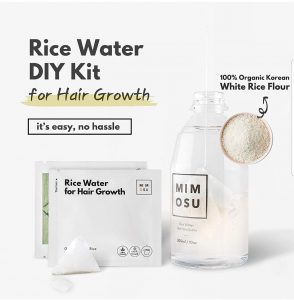My Beautiful #RedCarpetCurlsRoyalty,
Welcome back, my beautiful Queens, and I hope you are ready to dive into our next subject, Oil.
Oil is a tricky subject, you really have to understand the science behind your hair’s behavior and the oil you choose to use. I can even admit this is a subject which required a lot of research because the internet is filled with SO much information! Who even knows which blog has it right? When they are all so conflicting!
Lorraine Massey’s video did not add much to help clarify the community chatter. With the release of one video, she added hysteria into the CGM tank which led to so much worry and fear of oils! Which is insane! Especially when oil can be one of the most beneficial parts of your routine…when utilized correctly.
So, let’s get into the details of the video and clear up and confusion the video created.
What’s the deal with this Lorraine Massey video?
If you are reading this and wondering, “Who is Lorraine Massey and what video is she referencing?” Then let’s clear a few things up, shall we?
Lorraine Massey is the original Co-Founder of the Devachan Salon and product line. While she no longer owns, Devacurl (has been sold since her departure), she is the one we credit with introducing the Curly Girl Method to the masses with her book Curly Girl: The Handbook. Lorraine helped introduce the world to a more natural way of caring for your curls, absolutely no sulfates, silicones or parabens.
Originally when the book was published over 10 years ago, Lorraine believed oil was beneficial for your natural hair care regime. She believed oils help retain your hair and scalp’s natural moisture. Now, in her video posted in early October 2018, she says she has changed her mind on oils and find them to be more of a hindrance than a benefit.
This is where most in the curly community got confused.
Lorraine didn’t say all oils are bad. She said many oils on the market today are being filled with additives such as silicones. As part of the Curly Girl Method, we avoid silicones because they are a synthetic material that coats the hair strand. Essentially silicones encase the hair strands in a flexible barrier that doesn’t allow any moisture to leave your hair. This helps seal your cuticle and keep moisture in your hair for longer periods of time. The problem with silicones is if it is not allowing anything to leave the hair strand it is also not allowing anything to get in. That means you will not be able to effectively moisturize and protect the hair strands. Once the moisture runs out you have encased dry hair that is prone to split ends and breakage. Silicones must be clarified out of your hair with a sulfate-free clarifying shampoo that contains an anionic surfactant (the only surfactant type strong enough to remove silicones). This defeats the entire purpose of the method.
According to the American Journal of Clinical Dermatology, Natural plant-based and vegetable oils are pure. Plant-based oils consist of varying proportions of monounsaturated (MUFAs), polyunsaturated (PUFAs) fatty acids, and saturated fatty acids (SFAs). Remember when I told you fatty acids are good and that’s what you want for your scalp? Well, this is why! As a rule of thumb, monounsaturated fats will penetrate the hair strand better than polyunsaturated fatty acids. This is the key to oil penetration. This is why some oils work better than others for “moisturizing” a.k.a “softening” the hair strands. (Vaughn 106)
Pure plant-based and vegetable oil can in smaller amounts effectively penetrate the hair strands (depending on the oil you choose) and the scalp. The introduction of more fatty acids to the scalp helps to soothe and moisturize your scalp to prevent dandruff and dry/brittle hair. Fatty acids help encourage your scalp to produce more of its own natural oils to create a protective barrier for the scalp to keep it healthy and help give hair shine and life. That is why when used correctly pure oils are fantastic.
The problem, Lorraine mentions in the video, is that most on-the-market oil blends contain synthetic filler ingredients such as silicones. This takes away from the oil’s potency and benefits, instead, they hinder hair from getting the proper moisture and nutrients it needs.
Some examples of oil blends currently on the market that are filled with silicones are:
- Garnier Fructis Marvelous Oil Hair Elixir
- African Pride Hair Growth Oil
- Aussie Miracle Curls Curl-Defining Oil Hair Treatment with Australian Jojoba Oil
These are just a few examples of oil blends that look natural but are not. Remember roughly 80% of a product is the first five ingredients listed on a label. If a silicone or multiple silicones are in the first few ingredients it means the product is mostly made up of silicones and in the long run will build-up in your hair and prevent your curls from getting the moisture it needs.
According to the Journal of Cosmetic Science, “The presence of oil films on the surface of fibers(hair strands) leads to capillary adhesion between the fibers and increased specular reflection of light from the surface. The magnitude of these two effects depends on the thickness of the oil film, determined by the amount of oil applied. Penetration of oil into the fiber reduces the film thickness, which affects both capillary adhesion and light reflection.”
Basically, this means, the film provided by the oil to seal in moisture in your hair leads to more shine. Once the cuticle layer is properly sealed, which the oil does, the light molecules in the environment are now able to reflect off of the cuticle scales. This all varies on the specific oil you use and how much of it you use.
This is essentially what Lorraine says in the video. Pure oils in small quantities work fantastically. It can help you keep the moisture in your hair for longer periods of time, especially helpful for high porosity hair. The oil fills in those gaps temporarily and helps properly seal the cuticle.
How should you incorporate oils into your routine?
We have established, like silicones, the oil creates an invisible, flexible barrier outside the cuticle layer of your hair to seal in moisture for longer periods of time. Over time, the more consistently you use oil, that oil will build-up, and like silicones, prevent you from moisturizing your hair.
This is why I only use 4-5 drops of oil in the palm of my hair to gently scrunch into my hair to seal the ends. Some oils have better penetrating abilities than others. For example, Olive Oil penetrates slightly passed the cuticle layer but not all the way to the cortex (innermost layer of the hair). This can work to your advantage. While other oils such as castor oil will work to create the barrier only, helping extend the life of your wash and go. To see how I scrunch out my gel cast, do a scalp massage, and seal my ends using That’s That Magic oil, please click here.
You can also use oils to pre-poo. Pre-Poo stands for pre-shampoo, it is an extra step in your washday routine. You can pre-poo with oils, conditioners, aloe vera, etc. Using “Moisturizing Oil” also known as penetrating oils can help soften dry and brittle hair to make it shinier and full of life. Please remember oil does not actually moisturize the hair, it simply penetrates and softens. The reason pre-poo works well for me is that I use a shampoo to remove it. I am a big fan of sulfate-free clarifying shampoos, and since those contain anionic surfactants they are strong enough to completely remove the oil so it doesn’t stop moisture from penetrating my hair. This is why Lorraine says not to deep condition with oils, it won’t actually moisturize the hair. Yet, hot oil treatment is a nice treatment to do once in a while for shine and pliability.
Does this mean I cannot use products with oils in them?
No, you can still go about using the same products. As long as they are free from silicones, sulfates, and parabens. Many times smaller companies like That’s That Magic, Righteous Roots, Alodia Haircare, etc provide you with pure all-natural oil. You should not see synthetic ingredients in your oil blend…ever!
Final words from Queen Monroe
This video can seem terrifying at first, like “Oh my God, do you know how much money I just spent on products?” I totally get it! But as long as your oils are pure you are fine!
Lorraine simply wants to make sure you stay as natural as possible so nothing gets in the way of your hair goals! I agree synthetic ingredients do not belong in your oil.
As long as you keep a good sulfate-free clarifying shampoo around, or some kind of acidic rinses like a lemon rinse or an apple cider vinegar rinse, you will be fine utilizing oil!
Daily scalp massages with a few drops of oil daily help facilitate more blood flow to the scalp which will increase hair growth.
If you would like to learn more about which oils are considered penetrating vs sealing, make sure to stay tuned for that article coming later this weekend! If you have any further questions, don’t hesitate to let me know in the comments below!




